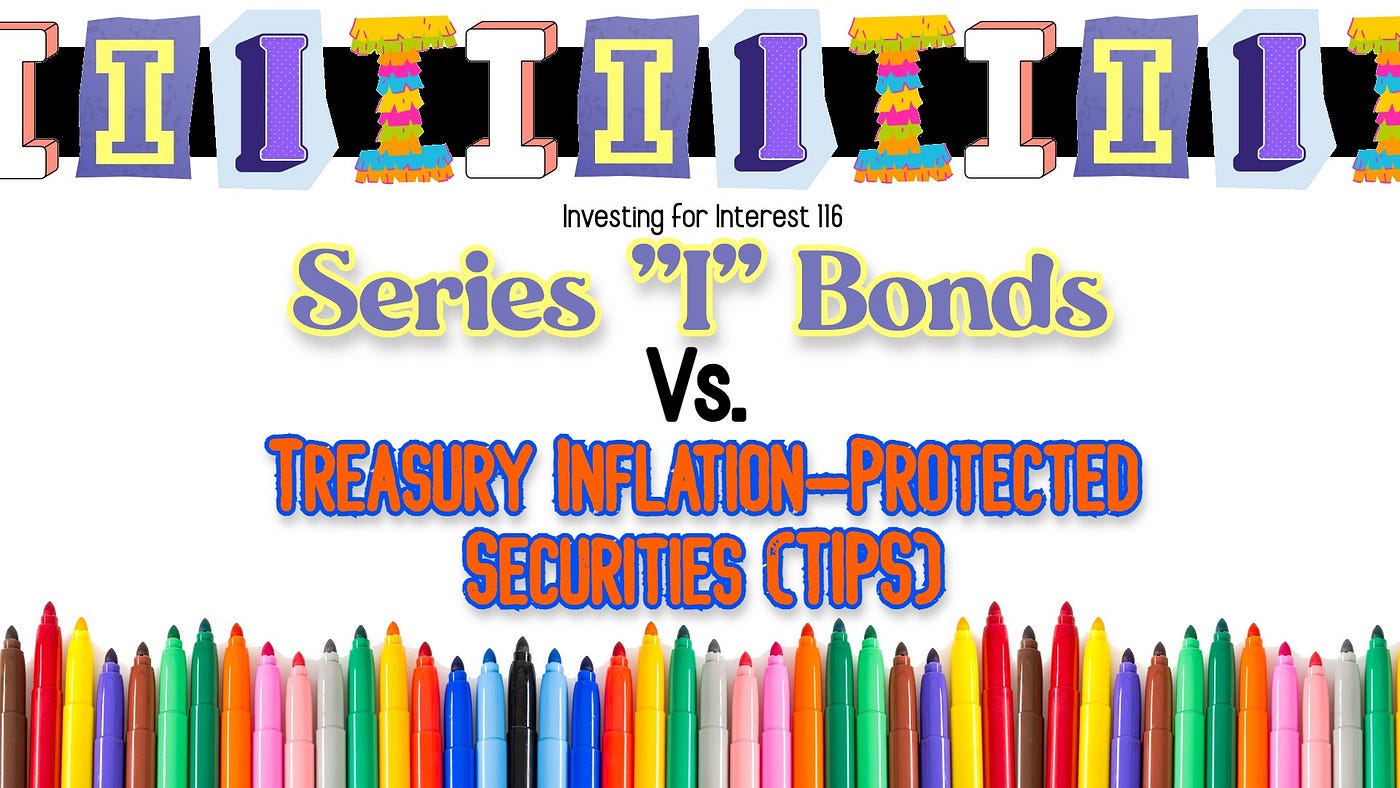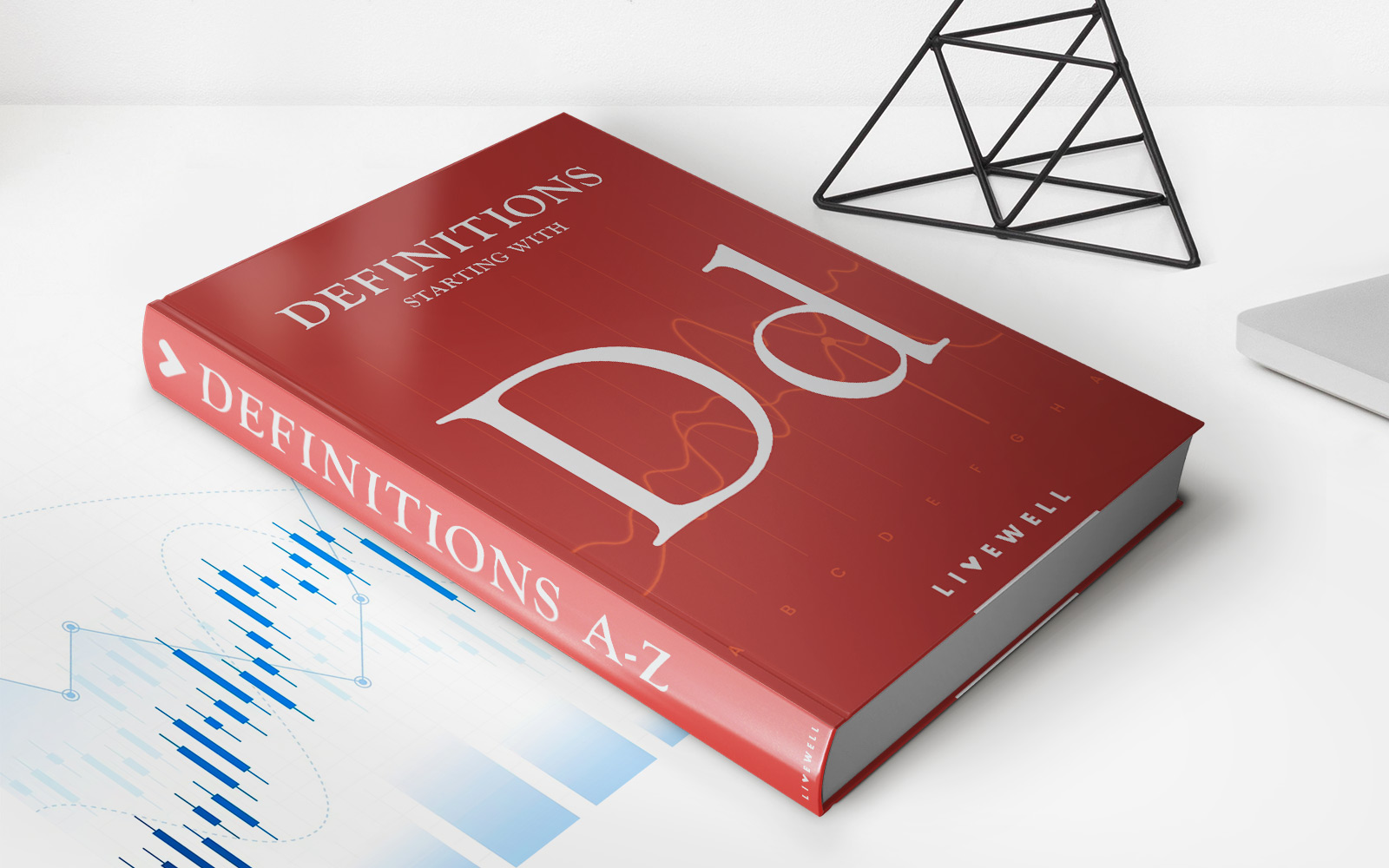Home>Finance>What Is The Difference Between I Bonds And Tips


Finance
What Is The Difference Between I Bonds And Tips
Published: October 12, 2023
Discover the key distinctions between I bonds and TIPS and make informed financial decisions. Find out how these investment options can benefit you.
(Many of the links in this article redirect to a specific reviewed product. Your purchase of these products through affiliate links helps to generate commission for LiveWell, at no extra cost. Learn more)
Table of Contents
- Introduction
- Definition of I Bonds
- Definition of TIPS (Treasury Inflation-Protected Securities)
- Characteristics of I Bonds
- Characteristics of TIPS
- Difference in Interest Calculation between I Bonds and TIPS
- Difference in Inflation Adjustment between I Bonds and TIPS
- Taxation Differences between I Bonds and TIPS
- Liquidity Differences between I Bonds and TIPS
- Investment Limits for I Bonds and TIPS
- Conclusion
Introduction
When it comes to investing in fixed-income securities, two options that often come up are I Bonds and TIPS (Treasury Inflation-Protected Securities). Both of these investment vehicles offer a way for individuals to protect their money against inflation, but they have some key differences that distinguish them from each other.
I Bonds are a type of savings bond issued by the U.S. Department of the Treasury. They were designed to offer a safe and accessible way for individuals to invest in the government’s debt while also providing protection against inflation. On the other hand, TIPS are also issued by the U.S. Treasury, but they are a type of bond specifically created to combat inflation.
Understanding the differences between I Bonds and TIPS is crucial for investors looking to diversify their portfolio and safeguard their purchasing power. In this article, we will explore the characteristics, interest calculation methods, inflation adjustment mechanisms, taxation policies, liquidity, and investment limits of both I Bonds and TIPS in order to provide a comprehensive understanding of each investment option.
By the end of this article, readers should have a clear understanding of the distinctive features and benefits of both I Bonds and TIPS, enabling them to make informed decisions when choosing between these two types of fixed-income investments.
Definition of I Bonds
I Bonds are savings bonds issued by the U.S. Department of the Treasury that provide a relatively safe and low-risk investment opportunity for individuals. They are designed to protect investors’ purchasing power against inflation while also offering a modest interest rate.
These bonds are sold at face value and accrue interest over time. The interest on I Bonds is composed of two components: a fixed rate and an inflation-adjusted rate. The fixed rate remains the same for the entire life of the bond, while the inflation-adjusted rate is calculated based on changes in the Consumer Price Index for All Urban Consumers (CPI-U). This inflation adjustment allows the bond’s value to keep pace with inflation.
I Bonds have a maximum maturity of 30 years, but they have a minimum holding period of one year. If the bond is redeemed before five years, however, the investor will forfeit three months’ worth of interest as a penalty. After five years, there is no penalty for early redemption.
One important feature of I Bonds is their tax advantage. While the interest earned on these bonds is subject to federal income tax, it is exempt from state and local taxes. This makes I Bonds a particularly attractive option for investors looking to minimize their tax liabilities.
Individuals can purchase I Bonds directly from the U.S. Treasury through their website, TreasuryDirect. They can be acquired in electronic form and held in an online account, or in paper form, which are no longer available for purchase directly from financial institutions but can still be obtained using a tax refund. The minimum investment amount for an I Bond is $25, and the maximum annual purchase limit per individual is $10,000 for electronic bonds and $5,000 for paper bonds.
Overall, I Bonds offer a combination of safety, inflation protection, and tax advantages, making them an attractive option for risk-averse investors who wish to preserve their purchasing power while earning a competitive return.
Definition of TIPS (Treasury Inflation-Protected Securities)
TIPS, short for Treasury Inflation-Protected Securities, are a type of bond issued by the U.S. Department of the Treasury to protect investors against inflation. These securities are designed to preserve the purchasing power of an investor’s principal by adjusting their value according to changes in the Consumer Price Index for All Urban Consumers (CPI-U).
Unlike traditional bonds, TIPS have two components that make them unique. Firstly, the principal value of the bond is adjusted periodically to reflect changes in the CPI-U. This ensures that the investor’s principal keeps pace with inflation, and when the bond matures, the adjusted principal value is returned to the investor.
Secondly, TIPS pay a fixed interest rate throughout the life of the bond. However, the interest payments themselves are adjusted semiannually based on the adjusted principal value of the bond. This means that as the principal value increases in response to inflation, the interest payments increase as well.
One important distinction of TIPS is that they provide investors with protection against deflation as well. If there is a period of deflation, the principal value of the bond can decrease, but the investor is guaranteed to receive either the original principal value or the adjusted principal value, whichever is higher, when the bond reaches maturity.
TIPS can be purchased directly from the U.S. Treasury through their website, TreasuryDirect, or through a financial institution such as a broker or bank. They are available in both electronic and paper form, with a minimum investment amount of $100 for electronic bonds and $1,000 for paper bonds. There is no maximum purchase limit for TIPS.
Interest earned on TIPS is subject to federal income tax, but it is exempt from state and local taxes. This can be advantageous for investors looking to minimize their tax liabilities.
TIPS have a maximum maturity period of 30 years, and they also offer the option to sell them before their maturity date on the secondary market. This provides investors with liquidity and the opportunity to capitalize on changes in market conditions.
In summary, TIPS are a unique type of bond that protects investors against inflation and deflation by adjusting the principal value and interest payments in response to changes in the CPI-U. They offer a reliable and inflation-hedged investment option for individuals looking to safeguard their purchasing power.
Characteristics of I Bonds
I Bonds possess several key characteristics that make them an attractive investment option for individuals:
- Inflation Protection: One of the primary features of I Bonds is their ability to provide protection against inflation. The interest rate on these bonds is composed of a fixed rate and an inflation-adjusted rate, which ensures that the bond’s value keeps pace with inflation over time. This makes I Bonds a valuable tool for preserving the purchasing power of an investor’s money.
- Safety: I Bonds are backed by the U.S. government, which makes them a low-risk investment option. They are considered one of the safest investments available in the market, as they are not subject to default risk. This makes I Bonds an attractive choice for risk-averse investors looking for a secure place to park their funds.
- Tax Advantages: Another notable characteristic of I Bonds is their tax advantage. While the interest earned on these bonds is subject to federal income tax, it is exempt from state and local taxes. This can result in significant tax savings for investors, making I Bonds a tax-efficient investment option.
- Flexible Holding Period: I Bonds have a minimum holding period of one year. However, they can be held for up to 30 years, allowing investors to choose the length of time that suits their investment goals and preferences. Furthermore, after five years, there is no penalty for redeeming the bond, providing investors with flexibility and liquidity.
- Accessibility: I Bonds can be easily purchased and managed through the U.S. Treasury’s website, TreasuryDirect. They are available in both electronic and paper form, making them accessible to a wide range of investors. Additionally, the minimum investment amount for an I Bond is relatively low, starting at $25, which makes them accessible to investors with varying budgetary constraints.
These characteristics make I Bonds an attractive investment option for individuals seeking a safe and accessible avenue to protect their funds against inflation, generate a competitive return, and minimize their tax liabilities.
Characteristics of TIPS
Treasury Inflation-Protected Securities (TIPS) possess several distinctive characteristics that differentiate them from other investment options:
- Inflation Protection: TIPS are specifically designed to protect investors against inflation. The principal value of the bond is adjusted based on changes in the Consumer Price Index for All Urban Consumers (CPI-U), ensuring that the purchasing power of the investment is maintained over time. This feature makes TIPS an attractive choice for individuals concerned about the eroding effects of inflation.
- Fixed Interest Rate: Unlike the principal value, the interest rate on TIPS remains fixed throughout the life of the bond. However, the actual interest payments are adjusted semiannually based on the adjusted principal value. This provides investors with a predictable income stream, which can be particularly beneficial during times of rising inflation.
- Safety: TIPS are considered one of the safest investment options available. They are backed by the U.S. government, which means they carry virtually no default risk. This makes TIPS an attractive choice for risk-averse investors looking for a secure place to invest their funds.
- Tax Efficiency: Although the interest income generated by TIPS is subject to federal income tax, it is exempt from state and local taxes. This tax advantage can result in significant savings for investors and makes TIPS a tax-efficient investment option.
- Liquidity: TIPS provide investors with liquidity through the secondary market. This means that investors have the option to sell their TIPS before maturity if they need to access their funds or take advantage of changes in market conditions. The ability to sell TIPS on the secondary market improves their overall liquidity and offers investors more flexibility.
- No Deflation Risk: TIPS provide protection not only against inflation but also against deflation. If there is a period of deflation, the adjusted principal value of the bond can decrease. However, when the bond reaches maturity, the investor is guaranteed to receive either the original principal value or the adjusted principal value, whichever is higher. This feature safeguards investors against potential losses due to deflation.
These characteristics make TIPS an attractive investment option for individuals seeking protection against inflation, a predictable income stream, and a safe and secure place to invest their funds.
Difference in Interest Calculation between I Bonds and TIPS
The calculation of interest for I Bonds and TIPS differs significantly. This distinction plays a crucial role in determining the returns and overall performance of these two types of securities:
In the case of I Bonds, the interest calculation includes two components: a fixed rate and an inflation-adjusted rate. The fixed rate remains constant throughout the life of the bond and is set at the time of purchase. The inflation-adjusted rate, on the other hand, is calculated based on changes in the Consumer Price Index for All Urban Consumers (CPI-U). This adjustment ensures that the bond’s value keeps pace with inflation. The result is a blended interest rate that reflects both the fixed rate and the rate of inflation.
TIPS, on the other hand, have a different methodology for calculating interest. They pay a fixed interest rate throughout the life of the bond, which is determined at the time of purchase. However, unlike I Bonds, the principal value of TIPS is adjusted based on changes in the CPI-U. These adjustments are made semiannually, and the interest payments are calculated based on the adjusted principal value. This means that as the principal value increases due to inflation, the interest payments increase as well.
To summarize, the interest calculation for I Bonds takes into account both a fixed rate and an inflation-adjusted rate, resulting in a blended interest rate. For TIPS, the interest payments remain fixed, but the principal value is adjusted according to changes in the CPI-U. This difference in interest calculation ensures that both I Bonds and TIPS offer investors protection against inflation, but the method of achieving this protection varies.
It’s important to note that the specific interest rates for both I Bonds and TIPS are subject to change and are determined by the U.S. Department of the Treasury. Investors should consult the Treasury’s website or financial professionals to get the most up-to-date information regarding interest rates for these securities.
Difference in Inflation Adjustment between I Bonds and TIPS
The method of inflation adjustment differs between I Bonds and TIPS, which impacts how these securities protect against inflation:
I Bonds use a two-step approach for inflation adjustment. The adjustment is based on changes in the Consumer Price Index for All Urban Consumers (CPI-U), a widely used measure of inflation. The inflation adjustment for I Bonds is calculated by comparing the average CPI-U for the six-month period ending in September with the average CPI-U for the six-month period ending in March. The difference is divided by the March CPI-U and multiplied by 100, resulting in a semiannual inflation rate. This adjustment is then added to the bond’s fixed rate to determine the composite rate of interest.
TIPS, on the other hand, use a different method for inflation adjustment. The principal value of TIPS is adjusted to reflect changes in the CPI-U. This adjustment is made on a monthly basis, as the Treasury Department calculates the inflation rate for each month and adjusts the principal value accordingly. The interest payments on TIPS, however, do not directly reflect the inflation adjustment. Instead, the interest is calculated based on the fixed interest rate applied to the adjusted principal value of the bond.
The difference in the inflation adjustment mechanism between I Bonds and TIPS means that the timing and frequency of adjustments vary. I Bonds have a semiannual adjustment, based on changes in the CPI-U over a six-month period. TIPS, on the other hand, have monthly adjustments based on the monthly CPI-U figures. This distinction affects the level of precision and currency in reflecting changes in inflation.
It’s worth noting that while both I Bonds and TIPS offer protection against inflation, the degree of inflation protection can vary due to the differences in adjustment methods. The specific formula used for these adjustments is determined by the U.S. Department of the Treasury and is subject to change.
Investors considering these securities should carefully evaluate the inflation adjustment mechanism of both I Bonds and TIPS to determine which option better aligns with their investment goals and preferences.
Taxation Differences between I Bonds and TIPS
There are differences in how I Bonds and TIPS are taxed, which can impact the overall tax liability for investors:
I Bonds: Interest earned from I Bonds is subject to federal income tax, but it is exempt from state and local income taxes. However, while the interest is added to the bond’s value, it is not received until the bond is redeemed. This means that investors have the option to defer paying taxes on the interest until the bond is cashed in, providing a potential tax advantage. Additionally, if the proceeds from the redemption of I Bonds are used to pay for higher education expenses, the interest can potentially be exempt from federal income tax as well.
TIPS: The interest income earned from TIPS is subject to federal income tax. However, similar to I Bonds, the interest on TIPS is exempt from state and local income taxes. This exemption can benefit investors residing in states with high income tax rates. Unlike I Bonds, the interest on TIPS is paid out semiannually, which means investors need to report and pay taxes on those interest payments in the year they are received.
It’s important to note that while the interest income from both I Bonds and TIPS may be subject to federal income tax, the taxation is deferred until the bonds are redeemed or the interest payments are received. This allows investors to potentially benefit from compounding growth without immediately incurring taxes.
Additionally, it’s crucial to consult with a tax professional or financial advisor regarding the specific tax implications of investing in I Bonds and TIPS. Tax laws and regulations can change, and individual circumstances may also affect an investor’s tax obligations.
Understanding the taxation differences between I Bonds and TIPS is essential for investors to accurately assess their after-tax returns and make informed decisions when choosing between these two investment options.
Liquidity Differences between I Bonds and TIPS
There are differences in liquidity between I Bonds and TIPS that can impact an investor’s ability to access their funds:
I Bonds: I Bonds have a minimum holding period of one year. During this time, investors cannot redeem their bonds without incurring a penalty equivalent to three months’ worth of interest. However, after the one-year minimum holding period, investors have the flexibility to redeem their I Bonds at any time. This means that I Bonds offer relatively high liquidity after the initial one-year lock-in period, allowing investors to access their funds when needed.
TIPS: TIPS, similarly to I Bonds, do not have any restrictions on the sale of the bonds after the initial settlement period. Investors can choose to sell their TIPS on the secondary market at any time, providing them with liquidity and the ability to adjust their investment portfolio. This secondary market liquidity can be advantageous for investors who may need to access their funds or take advantage of changes in market conditions.
Overall, both I Bonds and TIPS offer liquidity to investors, but there are slight differences in terms of the initial holding period and redemption penalties. I Bonds have a one-year minimum holding period, while TIPS have no specific holding period. However, it’s important to note that if an investor chooses to sell their bonds before maturity, they may be subject to market conditions and may not receive the full face value of the bonds.
Investors should assess their liquidity needs and consider the potential penalties or market risks associated with early redemption before making investment decisions.
Investment Limits for I Bonds and TIPS
Both I Bonds and TIPS have specific investment limits that investors must consider when purchasing these securities:
I Bonds: The U.S. Treasury imposes annual purchase limits on I Bonds. As of writing this article, the maximum annual purchase limit for electronic I Bonds is $10,000 per individual. This means an individual can invest up to $10,000 in electronic I Bonds in a calendar year. For paper I Bonds, which are no longer available for purchase directly from financial institutions but can still be obtained using a tax refund, the maximum annual purchase limit is $5,000 per individual.
TIPS: Unlike I Bonds, TIPS do not have specific annual purchase limits. Investors have the flexibility to invest as much as they desire in TIPS. This lack of purchase limits allows investors to tailor their investment to their specific financial goals and investment strategies.
It’s important to note that while there are no direct purchase limits for TIPS, there are specific regulations governing the creation and issuance of new TIPS. The U.S. Treasury monitors the supply of TIPS and adjusts issuance based on market demand and economic conditions.
Investors should carefully consider their investment goals, desired investment amounts, and the specific purchase limits associated with I Bonds and TIPS when deciding how much to invest in these securities.
Additionally, investors may want to consult with a financial advisor who can provide guidance on how I Bonds and TIPS fit within their overall investment portfolio and allocation strategy.
Conclusion
Understanding the differences between I Bonds and TIPS is crucial for investors looking to protect their money against inflation and make informed investment decisions. Both I Bonds and TIPS offer unique features and benefits that cater to different investment goals and preferences.
I Bonds, with their blended interest rate and inflation adjustment mechanism, provide a safe and accessible way to invest in the government’s debt while protecting against inflation. They offer a combination of safety, tax advantages, and flexibility, making them an attractive option for risk-averse investors looking to preserve their purchasing power.
TIPS, on the other hand, are specifically designed to combat inflation by adjusting the principal value based on changes in the CPI-U. They offer a fixed interest rate and provide protection against both inflation and deflation. TIPS offer safety, tax efficiency, and liquidity through the secondary market, making them a suitable choice for investors seeking inflation-hedged investments.
When deciding between I Bonds and TIPS, investors should consider factors such as their investment horizon, risk tolerance, tax situations, and liquidity needs. Additionally, it’s essential to assess how these investments fit within a broader investment portfolio and align with specific financial goals.
Ultimately, both I Bonds and TIPS can serve as valuable components of a diversified investment strategy. By carefully evaluating their respective characteristics, interest calculation methods, inflation adjustment mechanisms, taxation implications, liquidity differences, and investment limits, investors can make informed decisions that align with their financial objectives.
It’s advisable to consult with financial advisors or tax professionals to gain a comprehensive understanding of the potential benefits and drawbacks of investing in I Bonds and TIPS based on individual circumstances and goals.














